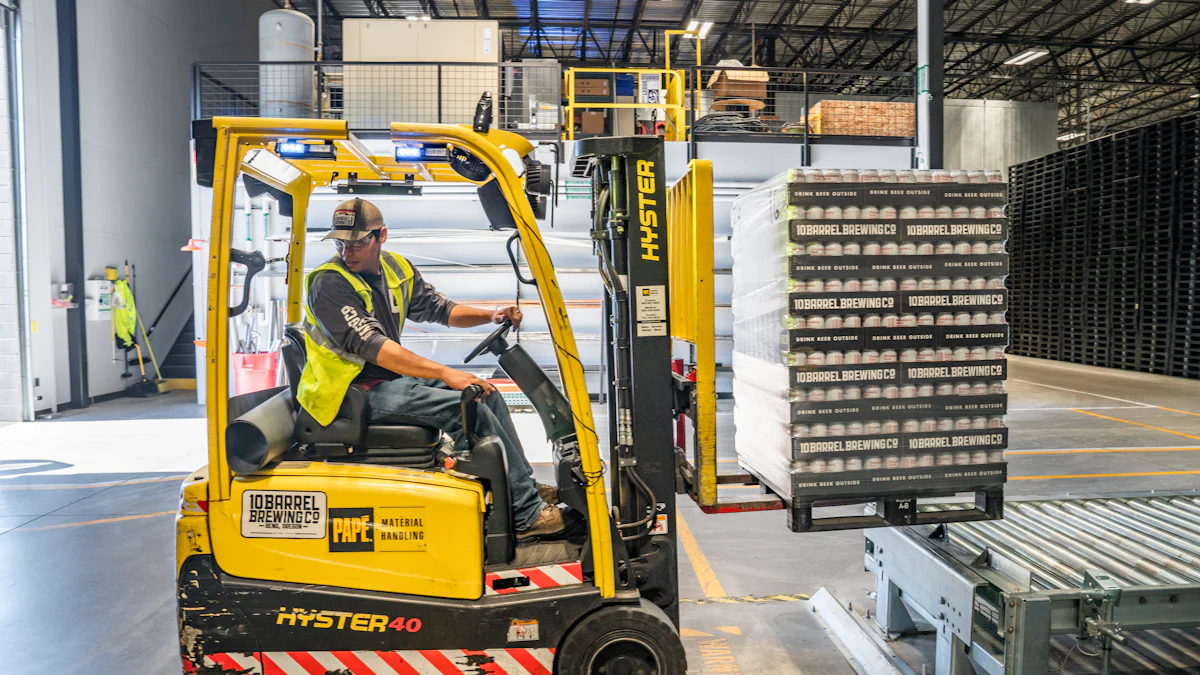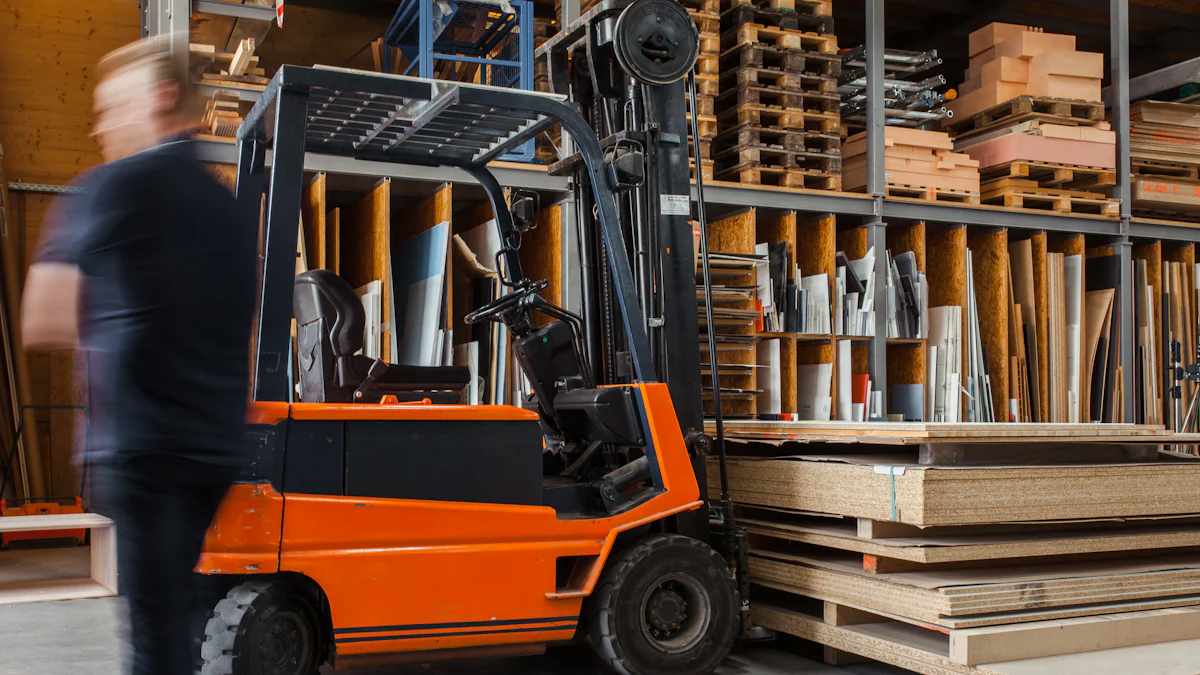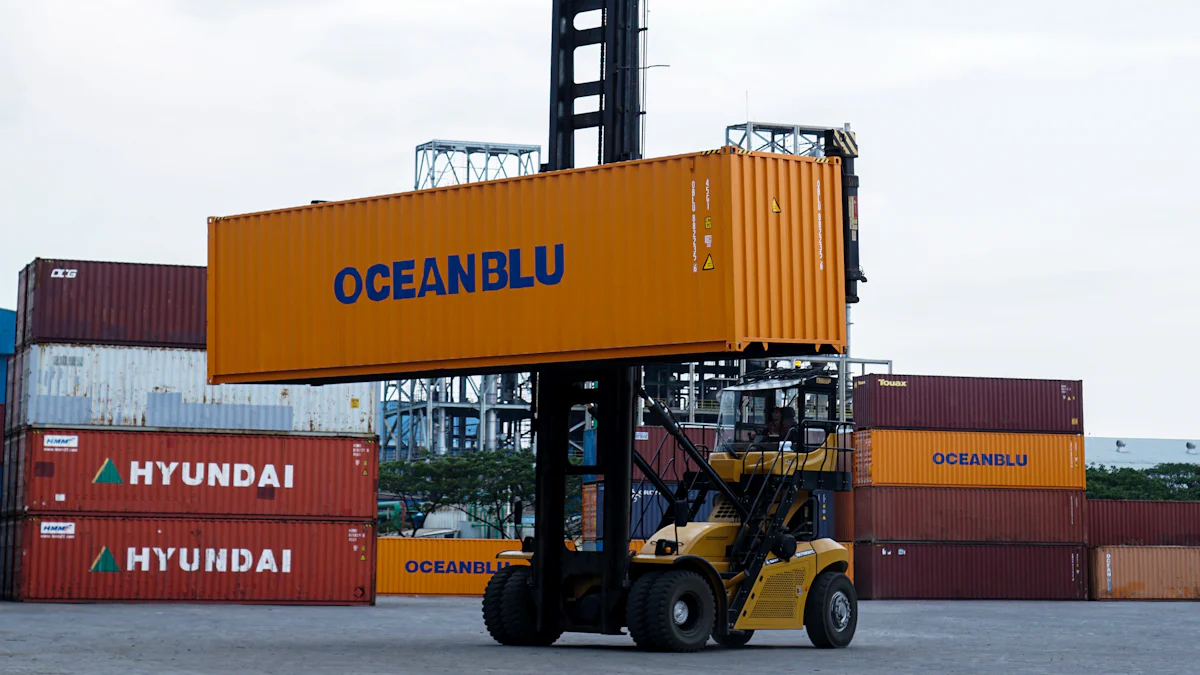
Selecting the ideal stacker self load is crucial for efficient warehouse operations. Understanding what a stacker self load entails and its benefits is essential. With this innovative equipment, moving goods becomes quick and effortless, enhancing productivity while minimizing labor costs. Unlike traditional pallet jacks, a stacker self load offers advanced features that streamline the process. This blog aims to guide readers in choosing the perfect stacker self load tailored to their specific needs.
Understanding Self-Loading Stackers

When exploring the realm of stacker self load, one encounters a diverse array of options designed to streamline warehouse operations. The Hyder’s Self-Loading Stacker stands out as a versatile and efficient choice for businesses seeking enhanced productivity and safety measures.
What is a Self-Loading Stacker?
Definition and basic functions
The Hyder’s Self-Loading Stacker is meticulously crafted to seamlessly integrate with various delivery vehicles, from wagons to containers. This compatibility ensures a smooth loading and unloading process, optimizing time management and reducing manual labor.
Types of self-loading stackers
Within the realm of stacker self load, the market offers a range of options tailored to different operational needs. The Self-Loading Stacker presents itself as an innovative solution that can replace traditional equipment like pallet jacks, offering unparalleled convenience and efficiency.
Key Benefits of Using a Self-Loading Stacker
Efficiency and productivity
By incorporating the Hyder’s Self-Loading Stacker into your workflow, you unlock a new level of efficiency. Its ergonomic design not only enhances operator comfort but also reduces fatigue, leading to increased overall productivity in material handling tasks.
Safety and ergonomics
Safety is paramount in any industrial setting, and the Hyder’s Self-Loading Stacker prioritizes this aspect with advanced safety features. Operators can handle materials confidently and securely, promoting a safe working environment while maintaining high levels of productivity.
Cost-effectiveness
Investing in the right equipment is crucial for long-term cost savings. The robust construction and low maintenance requirements of the Hyder’s Self-Loading Stacker ensure durability and reliable performance over time, making it a wise financial decision for businesses looking to optimize their operations.
Key Considerations When Selecting a Self-Loading Stacker
Load Capacity
Determining your load requirements
- Assess the weight, dimensions, and shape of the items you will be handling to accurately determine your stacker self load capacity needs.
- Consider the maximum weight of the heaviest load you will handle to ensure that the stacker self load can efficiently manage all your materials.
- Evaluate the frequency of use and the variety of loads to select a versatile stacker self load that meets your dynamic operational demands.
Matching stacker capacity to your needs
- Compare the load capacities of different stacker self load models available in the market to find one that aligns with your specific requirements.
- Ensure that the selected stacker self load has a sufficient weight capacity margin above your heaviest loads for safety and operational flexibility.
- Opt for a stacker self load with adjustable features or additional attachments to accommodate varying load sizes effectively.
Lift Height
Assessing your operational height requirements
- Determine the maximum stacking height needed in your warehouse operations based on storage configurations and accessibility requirements.
- Consider any future expansion plans or changes in storage systems when assessing your operational height needs for the stacker self load.
- Take into account any overhead obstructions or limitations within your warehouse space that may impact the required lift height.
Choosing the right lift height
- Select a stacker self load with a lifting height that comfortably exceeds your current maximum stacking requirement for added versatility.
- Ensure that the chosen lift height allows safe clearance under mezzanines, doorways, and other low-hanging obstacles in your workspace.
- Verify that the stacker self load offers precise control over lift heights to prevent damage to goods during stacking and retrieval processes.
Maneuverability
Space constraints and turning radius
- Measure the width of aisles and pathways in your warehouse to determine the necessary maneuverability specifications for the stacker self load.
- Consider factors such as sharp corners, narrow spaces, and obstacles when evaluating turning radius requirements for efficient navigation.
- Choose a compact and agile stacker self load model that can easily maneuver through tight spaces without compromising stability or safety.
Ease of operation in tight spaces
- Prioritize user-friendly controls and ergonomic design features that enhance operator comfort during operation in confined areas.
- Opt for stackers with responsive steering mechanisms and smooth acceleration capabilities for precise movement control in limited spaces.
- Test different stacker self load models under realistic conditions to assess their performance in tight warehouse environments effectively.
Power Source
When comparing stacker self load options, it’s essential to consider the power source that drives their operations. The choice between electric and manual stackers significantly impacts efficiency and performance in warehouse settings.
Electric vs. manual stackers
- Electric stackers offer consistent power delivery, ensuring smooth and reliable operation throughout the workday. They eliminate the need for manual effort, enhancing productivity and reducing operator fatigue.
- On the other hand, manual stackers rely on human power for lifting and maneuvering loads. While they may be suitable for lighter tasks or occasional use, they can be less efficient for demanding operations.
Battery life and charging considerations
- When opting for an electric stacker, assessing battery life is crucial to uninterrupted workflow. Consider factors such as battery capacity, charging time, and overall lifespan to prevent downtime during peak operational hours.
- Regular maintenance of batteries is essential to prolong their longevity and ensure optimal performance. Implementing a charging schedule and monitoring battery health can prevent unexpected failures and delays in warehouse activities.
Durability and Build Quality
The durability and construction of a stacker self load play a vital role in its long-term reliability and operational efficiency.
Material and construction
- High-quality materials like reinforced steel or aluminum contribute to the robustness of a stacker self load, ensuring it can withstand heavy loads and frequent use without compromising safety.
- Attention to detail in construction, including weld quality and component assembly, enhances the overall stability and structural integrity of the equipment.
Longevity and maintenance
- Regular maintenance routines are essential to preserve the longevity of a stacker self load. This includes lubricating moving parts, inspecting hydraulic systems, and checking for wear on key components.
- Investing in preventive maintenance programs can extend the lifespan of the equipment while minimizing unexpected breakdowns that could disrupt daily operations.
Additional Features to Look For

Ergonomic Design
Enhancing operator comfort and ensuring ease of use are crucial aspects to consider when selecting a stacker self load. The Hyder’s Self-Loading Stacker prioritizes ergonomic design, providing operators with a seamless and comfortable experience during material handling tasks.
- Operator comfort: The design of the Hyder’s Self-Loading Stacker focuses on reducing operator fatigue and promoting efficiency. Its adjustable features cater to individual preferences, allowing for personalized operation tailored to specific needs.
- Ease of use: With intuitive controls and ergonomic handlebars, the Hyder’s Self-Loading Stacker offers a user-friendly interface that simplifies operation. Operators can navigate through tasks effortlessly, enhancing overall productivity in warehouse operations.
Safety Features
Safety is paramount in any industrial setting, and the inclusion of advanced safety features is essential when choosing a stacker self load. The Hyder’s Self-Loading Stacker excels in providing robust safety measures to ensure secure material handling processes.
“The safety of our operators is our top priority,” says the manufacturer of the Hyder’s Self-Loading Stacker. “Our braking systems and stability enhancements guarantee a safe working environment for all.”
- Braking systems: Equipped with reliable braking mechanisms, the Hyder’s Self-Loading Stacker offers precise control over stopping distances and prevents sudden movements during operation. This feature enhances operator confidence and minimizes risks in busy warehouse environments.
- Stability and load security: The structural integrity of the Hyder’s Self-Loading Stacker ensures stability when handling various loads. Its secure load security measures prevent shifting or slippage during transportation, safeguarding both operators and goods from potential accidents.
Technological Enhancements
Embracing technological advancements can significantly elevate the efficiency and performance of a stacker self load. The integration of digital controls and displays sets the Hyder’s Self-Loading Stacker apart as a modern solution for streamlined warehouse management.
- Digital controls: The intuitive digital controls on the Hyder’s Self-Loading Stacker offer precision in operation, allowing operators to adjust settings with ease. This feature enhances operational accuracy and minimizes errors during material handling tasks.
- Integration with warehouse management systems: Seamlessly connecting with warehouse management systems, the Hyder’s Self-Loading Stacker enables real-time monitoring of inventory levels, order fulfillment processes, and equipment performance. This integration optimizes workflow efficiency and promotes data-driven decision-making within warehouse operations.
Making the Final Decision
Comparing Different Models
When it comes to selecting the perfect stacker self load, comparing different models is a crucial step in making an informed decision. Evaluating specifications and features allows businesses to assess which stacker self load aligns best with their operational requirements.
- Consider the Hyder’s Self-Loading Stacker alongside other leading models in the market to determine which one offers the ideal combination of efficiency, safety, and durability.
- Evaluate key specifications such as load capacity, lift height, maneuverability, power source, and additional features to understand how each model can enhance your material handling processes.
- Reading reviews and testimonials from industry experts and current users provides valuable insights into the real-world performance of each stacker self load. Look for feedback on reliability, ease of use, maintenance requirements, and overall satisfaction levels to gauge the practicality of different models.
Budget Considerations
Balancing cost and quality is a critical factor when finalizing your decision on a stacker self load. Understanding the long-term investment value versus short-term savings ensures that you select a model that meets both your operational needs and financial constraints.
- Assess the initial purchase cost of each stacker self load model against its long-term benefits in terms of productivity gains, reduced labor costs, and operational efficiency.
- Consider factors like maintenance expenses, spare parts availability, and service support when evaluating the overall cost of ownership for each model.
- Reflect on whether investing in a higher-quality stacker self load with advanced features will result in greater returns over time compared to opting for a more budget-friendly option with limited capabilities.
Trial and Testing
Before making a final decision on your stacker self load, engaging in hands-on testing is essential to ensure that the chosen model meets your specific requirements. Seeking expert advice and recommendations further enhances your confidence in selecting the perfect equipment for your material handling operations.
- Arrange for demonstrations or trials of shortlisted stacker self load models within your own warehouse environment to evaluate their performance under real-world conditions.
- Test each model’s functionality, ergonomics, maneuverability, safety features, and compatibility with your existing workflows to identify any potential limitations or advantages.
- Consult with industry professionals or equipment specialists to gather insights on optimal configurations, customization options, and best practices for integrating a new stacker self load into your daily operations.
- Summarize the essential aspects of selecting a self-loading stacker, from load capacity to maneuverability.
- Stress the significance of meticulous research and thoughtful deliberation in choosing the right equipment.
- Encourage readers to invest time in making a well-informed decision that aligns with their operational requirements.
- Conclude by highlighting the substantial benefits that come with selecting an optimal self-loading stacker tailored to their specific needs.
Post time: Jun-24-2024
